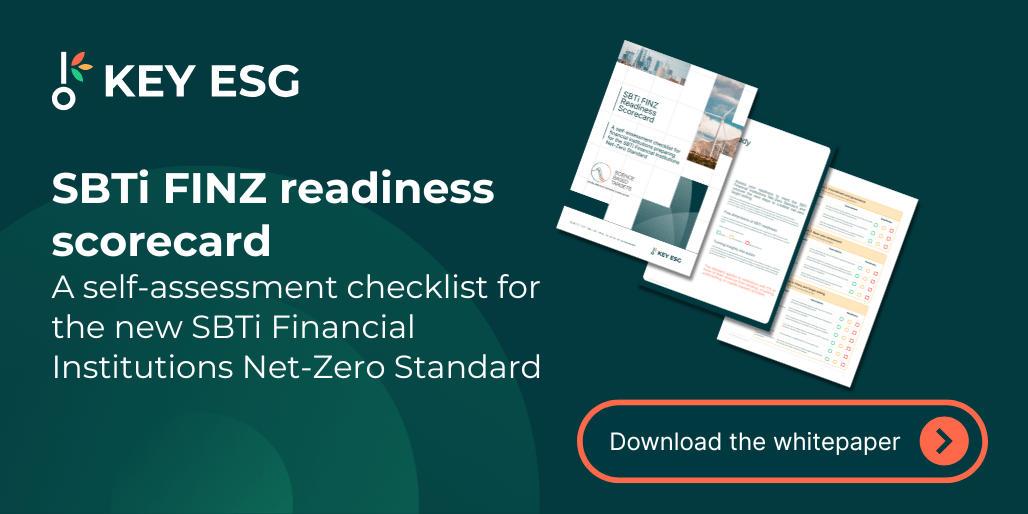EFRAG's value chain guidance for ESRS
EFRAG have released their draft value chain guidance document, for both professionals tasked with CSRD compliance and users of the ESRS reports. It is now under review following a consultation which ended at the beginning of February.
According to EFRAG, the value chain guidance should be read alongside their double materiality assessment guidance, which outlines the steps companies can take to determine their material impacts, risks and opportunities (IROs) for reporting against the ESRS. Click here to find out more about the double materiality assessment guidance. In that document, EFRAG emphasises that IROs arising or potentially arising from business relationships in the upstream or downstream value chain must be considered. But how far upstream or downstream should companies assess and what information must they disclose related to their value chain double materiality assessment?
Companies should focus on the geographies, activities/sectors, operations, suppliers, customers, other relationships within the value chain that they believe are likely to bring about material (referring to double materiality) IROs.
In ESRS 2, SBM-1, SBM-3 and IRO-1 should cover the assessment of IROs in the value chain. Within the individual topics, companies should describe the policies, targets and actions aiming to address material IROs in their value chains. Although there aren’t many metrics for value chain disclosures in the ESRS, companies can use their own metrics, where they see that the requirements aren’t sufficient to enable users to understand the company’s IROs. If primary value chain information cannot be collected, companies can use sector data, estimates or proxies where possible, describing the metrics used and their accuracy in their report.
We understand that EFRAG guidance can be confusing, difficult to decipher and tough to implement. Therefore, we have made it easy to deliver your CSRD reporting requirements with the step-by-step CSRD module in our ESG management software. If you are interested in using our ‘world-class software’ to ease your ESG reporting processes, book a personalised demo.
Alternatively, if you would like to read more about EFRAG’s guidance, download the guidance document by filling in the form below.
EFRAG's value chain guidance for ESRS
EFRAG have released their draft value chain guidance document, for both professionals tasked with CSRD compliance and users of the ESRS reports. It is now under review following a consultation which ended at the beginning of February.
According to EFRAG, the value chain guidance should be read alongside their double materiality assessment guidance, which outlines the steps companies can take to determine their material impacts, risks and opportunities (IROs) for reporting against the ESRS. Click here to find out more about the double materiality assessment guidance. In that document, EFRAG emphasises that IROs arising or potentially arising from business relationships in the upstream or downstream value chain must be considered. But how far upstream or downstream should companies assess and what information must they disclose related to their value chain double materiality assessment?
Companies should focus on the geographies, activities/sectors, operations, suppliers, customers, other relationships within the value chain that they believe are likely to bring about material (referring to double materiality) IROs.
In ESRS 2, SBM-1, SBM-3 and IRO-1 should cover the assessment of IROs in the value chain. Within the individual topics, companies should describe the policies, targets and actions aiming to address material IROs in their value chains. Although there aren’t many metrics for value chain disclosures in the ESRS, companies can use their own metrics, where they see that the requirements aren’t sufficient to enable users to understand the company’s IROs. If primary value chain information cannot be collected, companies can use sector data, estimates or proxies where possible, describing the metrics used and their accuracy in their report.
We understand that EFRAG guidance can be confusing, difficult to decipher and tough to implement. Therefore, we have made it easy to deliver your CSRD reporting requirements with the step-by-step CSRD module in our ESG management software. If you are interested in using our ‘world-class software’ to ease your ESG reporting processes, book a personalised demo.
Alternatively, if you would like to read more about EFRAG’s guidance, download the guidance document by filling in the form below.




%20(2).png)

